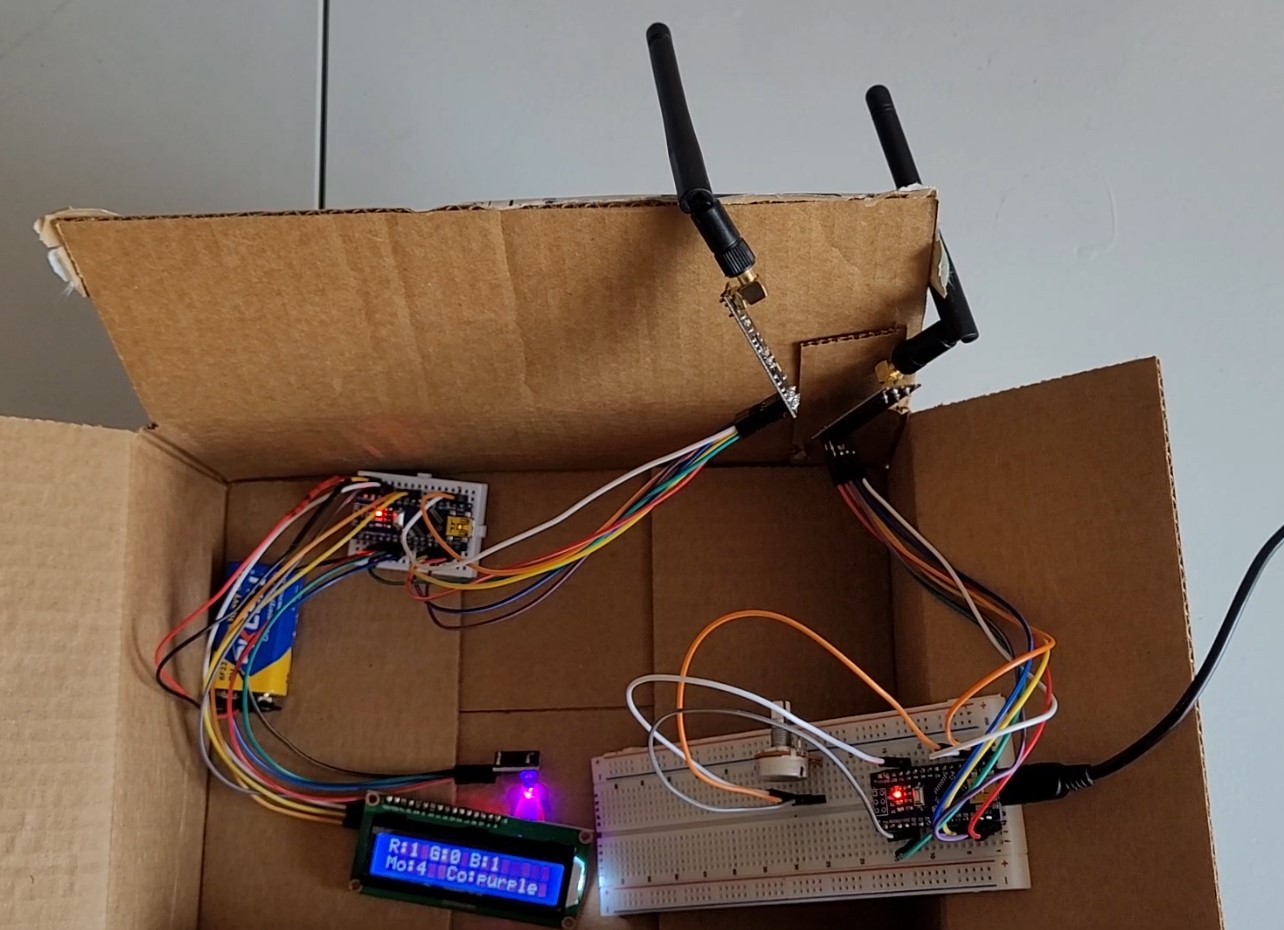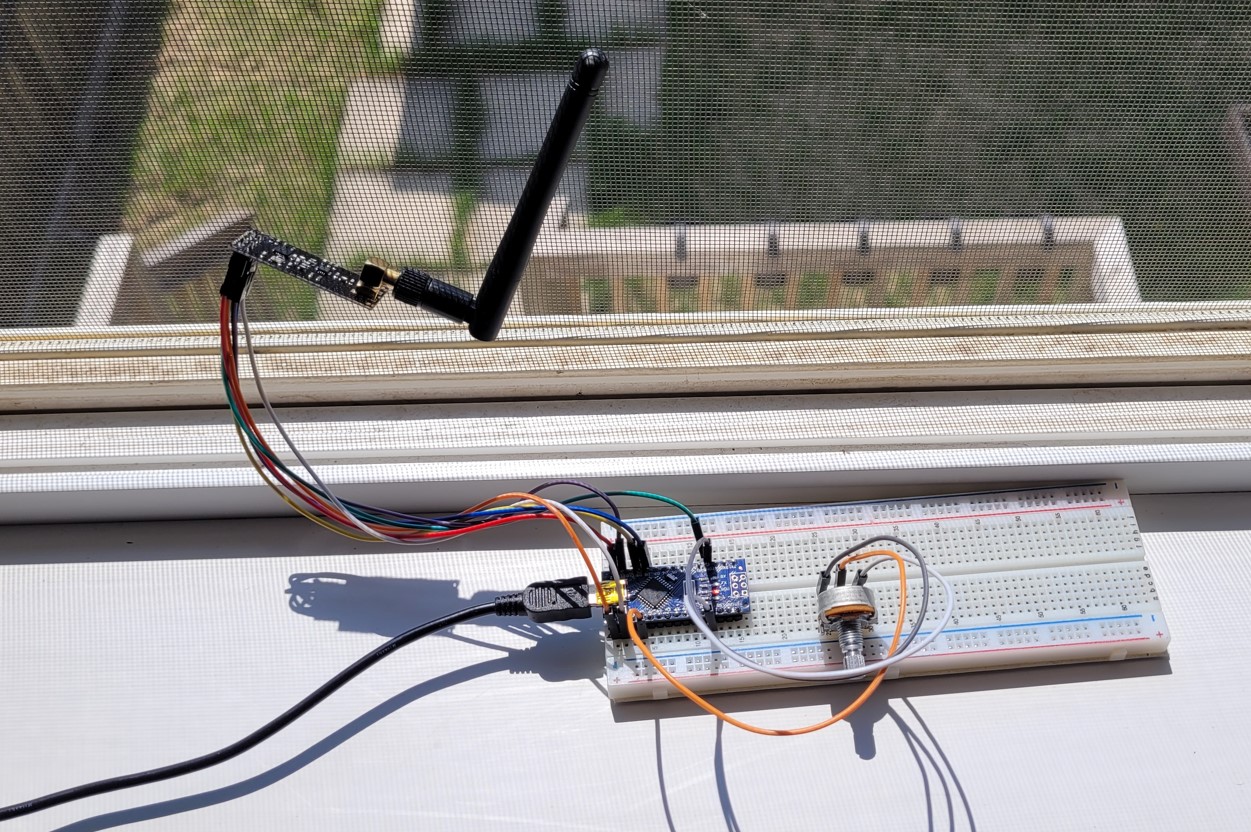Testing NRF24L01 Radio Module Communications
TAGS: electronics; software; Arduino nano; NRF24L01 radio module
Why I Did This
I love the ‘magic’ of remote communications (i.e. being able to control items from long wireless distances). I wanted to test out some widely popular radio communication modules known as the NRF24L01 (I specifically have the longer-range PA/LNA ones, but the wiring and coding techniques are the same as the original). NRF24L01 modules operate under the widely popular 2.4GHz unlicensed radio band.

Sender and receiver nanos with NRF radios;
The sender included a potentiometer for
manual
mode
change, but it was reprogrammed to do mode chnages automatically after 1 second;
The
receiver included an LCD display, a Red-Green-Blue led, and a 9V battery for
portability.
Design Walkthrough
Parts: 2x Arduino microcontrollers (nano); 2x NRF24L01 (PA/LNA) modules; 1602 LCD display; RGB led; 2x 9V batteries; potentiometer
Following the directions of some Arduino script examples I found on Instructables.com, I
setup a code
script to allow a
potentiometer to change the colour of an RGB led and display the state on a 1602 LCD
display. The idea was that I could put the potentiometer on one setup of nano and radio,
then put a
RBG led and display on the other setup of nano and radio, then tune the led colour from a
distance.
It worked well enough; I was able to control the color easily from 60 feet (18 meters) away,
but I wanted to see how far I could get before losing control. I changed the programming of
the sender setup to be from using a manual potentiometer to instead having an automatic
incrementor that will change the led state every second, that way I can walk with the
reciever away
from my place and see how far I can go before noticing the led won't change.

I tried setting up the sender nano to a high point, near a window, to reasonably maximize the sending signal.
Well-functioning NRF receiver; it cycles lights (and mode numbers) without skipping because it is within range of transmitter.
Poor-functioning NRF receiver; it skips mode lights/numbers because it is just on the edge of the transmitter's range.
Lessons Learned and Future Changes
But what’s its real potential? I was able to stay connected up to about 250 feet (76 meters) away in a congested neighbour of houses and garages, but I read that it could potentially stay connected at about 3600 feet (1100 meters), so I would love to take it to a long open field or mountain and test the range; maybe use it on drone/plane project.References
NRF24L01 tutorial: https://www.instructables.com/NRF24L01-Tutorial-Arduino-Wireless-Communication/